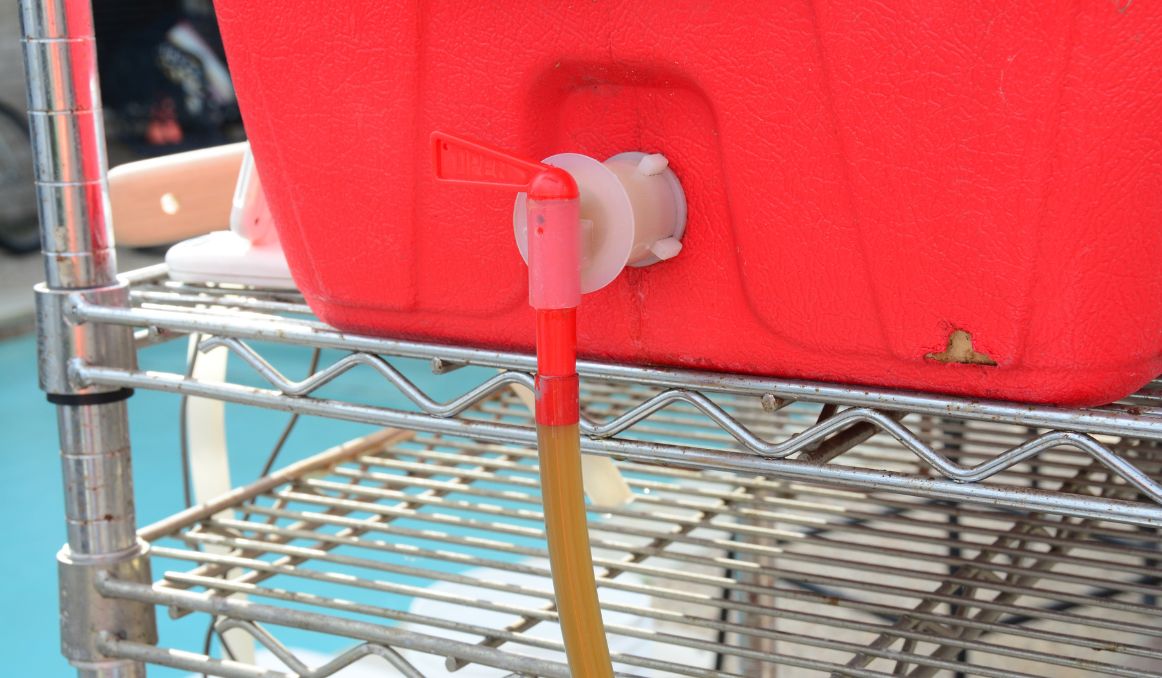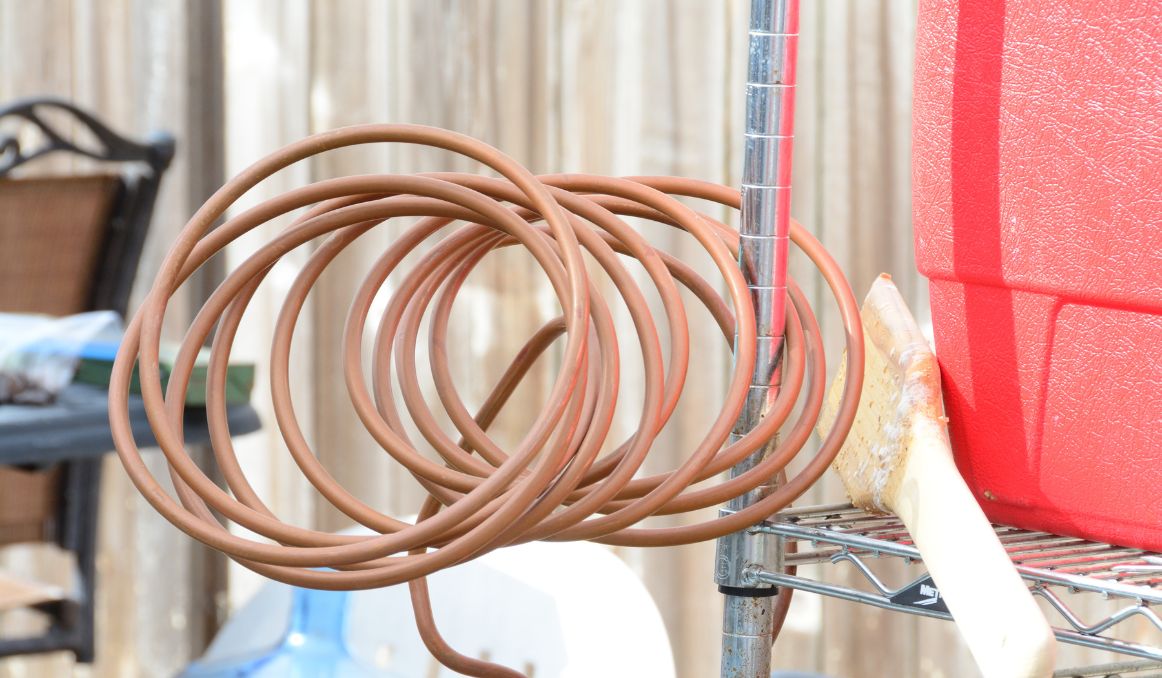How to Siphon Beer with a Racking Cane
Beer was a happy accident for humanity, much like wine and cider, but with a bit more complexity, of course.
The history of beer is a fascinating one that has led up to amazing technology, like the discovery of the need for racking, and of course the need for the equipment to perform racking.
So, how did we figure out how to rack beer and how to siphon beer with a racking cane after all?

Brewing 101
How is it possible that beer took off around the world after a single happy accident?
It’s not, really.
Just like with wine, there had to have been some sort of global phenomenon that allowed for multiple cultures to “discover” beer at around the same time.
In the case of wine, it was simple. Yeast is naturally attracted to sugars, so multiple civilizations would have discovered the wonders of wine simply by leaving grape juice out in the open.
Indeed, wine has likely been a part of human civilization long before we were even humans.
All our apelike ancestors would have had to do was to try some overripe fruit that had been sitting out, perhaps even out of desperation.
The euphoric effect would have been obvious as the yeast had fermented the rich sugars in the rotting fruit into alcohol thereby simultaneously killing any bad bacteria that would have been present.
Such is the power of yeast and alcohol.
In the case of beer, that global phenomenon was the domestication of agriculture, back in 10,000 BC.
As more and more civilizations settled down, irrigated their land, and planned growing and harvesting periods, more wild grains were then discovered and experimented with.
Cereal is a natural byproduct of grains, and often to make cereals, farmers will roast or kiln their grains.
Then, you can serve those cereal grains as meals.
Again, it is not a stretch to imagine a cereal grain meal of sorts left out for too long that is then discovered to have created a gruel, an ale, or other grain based fermented beverage.
For thousands of years then, beer was largely domestic.
The original homebrewers would simply brew their beer and serve it at mealtimes, purifying their potentially contaminated river water, and offering a nutritious beverage that could be preserved, thanks to alcohol.
Over time, of course, brewing became a business, largely starting with monasteries and churches, where monks would make wine and beer and sell it to benefit the order or the church.
Those brewers then mastered their craft, learning to cut sweetness with herbs like hops, figuring out how to collect and harvest their own yeast, and discovering the art of racking.

Racking Beer
Racking beer offers tremendous benefits to the beverage.
The act of moving fermented beer from one vessel to another serves multiple purposes.
First, it removes the bulk of dead yeast cells and other solid particles that can cause cloudiness and off flavors.
Second, it agitates what live yeast does remain in the beer, which then causes that yeast to get to work furthering fermentation. This process is called secondary fermentation, during which any existing off flavors are smoothed out and the beer “finishes.”
Third, it allows for the cropping of vital and viable yeast to be used in a future batch.
Racking was once done simply by pouring the fermented beer from its original vessel into another, but brewers quickly realized that in stirring up the brew to this extent they were actually causing more cloudiness and disturbing the trub and the yeast that could otherwise be discarded and/or collected.
The first invention to prevent this was the vessel with a spigot on the bottom.
If you can rack your beer this way, especially with a conical shaped vessel, you have the ideal setup for racking beer as you can funnel beer directly from the vessel into your next vessel while also perfectly capturing your trub and yeast for collection.
If you don’t have a conical shaped vessel with a spigot, say you’re using a carboy, you will likely need to rack it with tubing.
The best possible tubing setup for racking beer from a carboy is an auto-siphon.
With an auto-siphon, you can insert the tubing directly into the carboy and place the other end of the tube into the secondary vessel. Then, you merely push the pump, and the brew will begin transferring, or “racking.”
If you don’t have an auto-siphon, then you likely have the racking cane that came with your brewing kit, or you’re on a tight budget, and a racking cane is all you can afford right now.
That’s okay. We can still work with that.
How to Siphon Beer with a Racking Cane
A racking cane is a cane shaped tubing device that allows you to stick the long end into your carboy with the spigot of sorts angled at the top, where you can attach tubing to go into your secondary vessel.
To siphon beer with a racking cane, you have a couple options.
The most obvious options is to put your mouth around the end of the tube and suck on it until the beer starts flowing. Place your finger over that end where your mouth was quickly and transfer the tube to the secondary vessel, removing your finger at the last minute and allowing the liquid to flow.
This method is of course highly unsanitary and not recommended.
It is effective, though.
The best, and most sanitary way to siphon, however, is simply to fill up your tube with water or sanitizer solution, holding both ends with your fingers.
Then, take one end and hook it up to your racking cane, place the other end over your secondary vessel, and release your finger, allowing the water or sanitizer to flow into this separate container. The pull of the sanitizer will trigger the racking cane to pull up the beer, and you will see your brew flowing nicely. Once it does, you can make the switch to your fermenter, a step that might be a bit difficult to master. If you’ve used water, just that small amount will not affect the quality of the beer, so you should not worry about mixing them. However, if you’ve used sanitizer, you will have to make the switch.
And now you have effectively, efficiently, and cleanly, siphoned beer with a racking cane.
Cheers!
Passionate about the beer and/or wine making process? So are we! If you’re interested in finding out how you can use our technology to control fermentation and monitor your yeast, save work hours and improve the cost-efficiency of your business, drop us a line at [email protected] or check out our product pages:
- Oculyze BB 2.0 (Better Brewing) Yeast Cell Counter App + Hardware
- Oculyze FW (Fermentation Wine) Yeast Cell Counter App + Hardware
Also, you can now get access to a fully functional demo account to test our Web App. Completely free of charge and with no commitment to purchase.
Sources:


